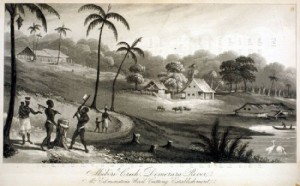The ex-slave who influenced Darwin

John Edmonstone was a freed Guyanese slave who taught taxidermy to famed naturalist Charles Darwin at Edinburgh University in Scotland.
Edmonstone is said to have been born in Demerara, Guyana and while still a slave,he learned taxidermy from British naturalist Charles Waterton (1782 -1865). His ‘master’, Charles Edmonstone, had a daughter who married Waterton in 1829, and Waterton was a regular visitor at his father-in-law’s Mibiri Creek, Demerara estate.
John Edmonstone, writes Melissa Pandika, author of OZY magazine online, accompanied Waterton on bird collecting expeditions, entrusted with the crucial task of stuffing captured birds on the spot, before they rotted.
According to Professor Janet Brown in the BBC programme “Making History: John Edmonstone”, in 1807, Charles Edmonstone brought John to Glasgow to his estate north of the city then later freed him.




